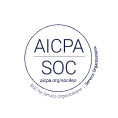
Friction kills retention: how UX design best practices can be the front line against churn

The classic sales and marketing question of “is it more important to acquire a new customer, or maintain a current one?” mostly boils down to hard numbers:
- It is 5x more expensive to acquire a new customer than it is to keep an existing one.
- The success rate of selling to an existing customer is 60-70%, while the success rate of selling to a new customer is 5-20%.
- A 5% increase in customer retention rates boosts profits by 25-95%.
(Source: Serviceinstitute)
Despite these numbers, customer churn remains a bane of SaaS marketing and sales leaders, causing direct revenue loss from cancelled subscriptions and lower customer lifetime values (CLTV).
The problem is that most churn strategies focus on price, promos, or heroic customer success. But the quiet killer is preventable friction: confusing onboarding processes, vague CTAs, and workflows that make people put in too much effort.
In SaaS, those “effort moments” show up as longer time-to-value (TTV) and missed activation.
The secret weapon to fighting churn is actually a UX design that just works. Teams that treat UX as a churn lever can flatten the hazard of churn and lift net revenue retention (NRR).
Why churn is often a UX problem
1) Effort is the enemy of loyalty
Customers don’t churn because they don’t care; they churn because it’s too hard to care. The quickest path to lower churn is to eliminate friction points that require too much effort from the customer.
For digital products, effort hides in unclear information architecture, multi-step setup, and mismatched mental models.
Applying UX design best practices like simplified layouts, consistent patterns, and clear pathways helps users find success faster and feel in control. The easier it is to accomplish a goal, the less likely users are to leave.
GUIDE
The better way to drive software renewals
2) Poor onboarding = silent churn
If new users struggle to get started, they’re unlikely to return. Here are some quick tips for better onboarding;
- Incorporate user onboarding best practices: Using onboarding best practices like guided checklists, contextual prompts, and milestone celebrations are all ways good UX designs can turn first-time users into long-term customers, and long-term customers into advocates.
- Measure onboarding speed: The main metric to measure onboarding is speed. Users need to get to meaningful action fast. The faster a user interacts with your product hands-on, the stronger their engagement curve. UX designs can also incorporate progress indicators and instant feedback to show users how far they’ve come.
- Ensure consistency across devices: Users often switch between mobile and desktop during onboarding. Inconsistent layouts or language breaks trust. Uniformity across touchpoints allows users to have a seamless process every time they return to their application.
3) Go beyond traditional metrics
Metrics like completion rate, bounce rate, or session time can highlight problem areas, but they don’t reveal the human emotion or reasoning behind those actions.
That’s where qualitative insight becomes essential. Feedback and analytics from real people bridge the gap between behavioral data and human context.
Leading SaaS companies integrate UX feedback loops directly into analytics dashboards so that every metric has a corresponding human narrative behind it.
This could include:
- Heatmaps + video feedback reveal not just clicks but intent. Why did users hesitate before clicking? What did they expect to happen?
- Funnel drop-off data + think-aloud tests show what users were trying to achieve at each stage, clarifying whether friction was due to UI complexity or mental model mismatch.
- A/B testing + post-test surveys identify not just which version performs better, but why users prefer one over the other, helping teams optimize both functionality and perception.
The mechanics: how UX design best practices drive retention
Below are four key UX levers that SaaS teams can optimize using UX feedback and design best practices.
A) Simplify onboarding journeys
Pattern: Break complex setup into simple steps, add clear progress indicators, and provide guidance only when users need it.
Why it works: Early confusion is one of the biggest churn drivers. A simplified onboarding experience—validated with UX feedback—ensures users understand your value from the start.
B) Clarify calls-to-action and navigation paths
Pattern: Use outcome-driven CTAs (“Create report” vs. “Next”), make navigation intuitive, and remove unnecessary steps.
Why it works: Users stay when they know what to do next. Applying UX design best practices to key flows helps users progress naturally without second-guessing themselves.
C) Speak the user’s language
Pattern: Replace internal jargon with customer-friendly terms. Test the interface copy through customer or target audience feedback interviews.
Why it works: Misaligned terminology breaks trust. When your product “speaks” like your users, they understand and act faster.
D) Smooth billing and renewal experiences
Pattern: Make pricing and renewals transparent, surface plan value clearly, and provide gentle reminders.
Why it works: Trust doesn’t end at checkout. Simple, well-communicated billing flows reduce both voluntary and involuntary churn, which is one of the most overlooked aspects of UX design best practices.
Turning UX design best practices into a retention engine
At its core, reducing churn is a design opportunity. By treating UX as a measurable growth lever using real UX feedback, user onboarding best practices, and continuous validation, SaaS teams can turn user experience design into a true retention driver. The result is more than satisfied users; it’s loyal customers who stay, renew, and advocate for your product long after sign-up.
Key takeaways
- Most SaaS churn stems from poor experience design, not poor pricing.
- Following UX design best practices helps reduce user effort and confusion.
- Strong user onboarding best practices ensure customers find value quickly.
- Continuous UX feedback reveals the why behind drop-offs and helps teams fix them early.
FAQ
Q1. How does UX design for SaaS reduce churn?
Answer: By improving clarity, guidance, and accessibility throughout the user journey. SaaS products that apply UX design best practices make it easier for users to succeed—and users who succeed stay longer.
Q2. What are the top user onboarding best practices for SaaS teams?
Answer:
- Start small: guide users through one simple, valuable action.
- Use contextual tips instead of lengthy tutorials.
- Personalize onboarding based on role or goal.
- Continuously test onboarding with new users for clarity.
Q3. What are signs of poor UX contributing to churn?
Answer: Users abandoning setup halfway, repeated support tickets, or confusion about value. These are clear signals that UX feedback and redesign are needed.
Q4. How can UserTesting help SaaS teams fight churn?
Answer: UserTesting lets teams collect UX feedback from real customers before launch. That means fewer surprises, faster iteration, and experiences that keep users coming back.
ON-DEMAND WEBINAR





